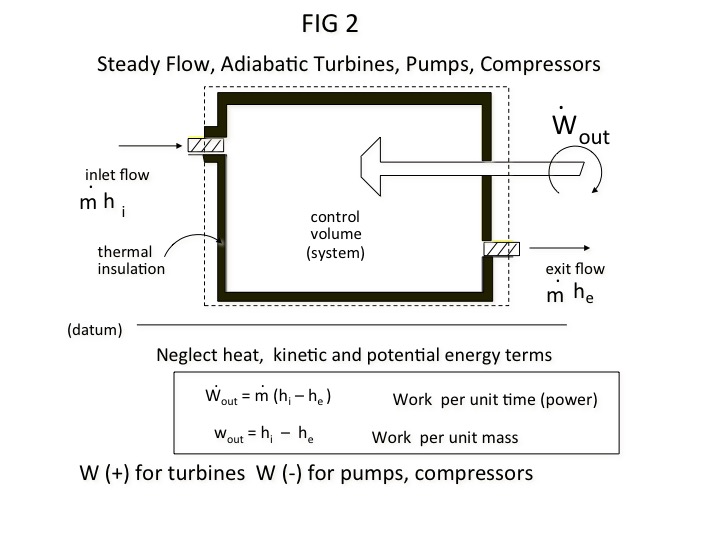1. Now, is it necessary that the cyclic heat engine needs to be a closed system? Or is this formula Q1 – Q2 applicable if the closed system is replaced by a steady flow open system? Please explain.
I think there is some confusion regarding the terms “closed system”, “cyclic heat engine” and “steady flow open system” that I believe @Chester Miller was trying to clear up in his exchange of comments with you.
It is not necessary that a cyclic heat engine be a closed system. Take the Carnot cycle for example. One type of “heat engine” in a Carnot cycle is the piston/cylinder containing an ideal gas. This device is a closed system since no gas enters or exits the cylinder during any of the processes (reversible isothermal and adiabatic expansions and compressions). But you could also have a Carnot heat engine consisting of a steam turbine in which the working fluid (steam) enters and exists the turbine. The turbine is an open system. It operates with other open system components (boiler, compressor and condenser) in a closed cycle. For both of these Carnot heat engine examples Q1 – Q2 applies to the work done.
For open systems the working fluid of the cycle enters and exits each component of the cycle. But generally the fluid is “contained”, that is, it generally (but not necessarily) stays within the confines of the collective components of the cycle. Each of those components can be viewed as a control volume. The contents of the control volume constitute the system for each component. The following figures may help to illustrate this.
Figure 1 below illustrates the general case of an open system in the context of the first law. It assumes steady flow conditions, that is, each system in the cycle does not change (no build up or loss of mass, energy, etc.). The general open steady flow system shown applies to the steady operation of turbines, pumps, compressors, throttling valves, nozzles, and heat exchangers, including boilers and condensers. However for each of these devices many of the energy terms do not apply.
To simplify matters, let’s consider the ideal Rankine power cycle. The major cycle components are the turbine, pump, boiler and condenser.
Figure 2 simplifies Figure 1 for the adiabatic turbine and pump components of the cycle. Potential and kinetic energy changes can generally be ignored, and there is no heat transfer. Work-out (turbine) and work-in (pump) are simply related to enthalpy changes at the inlet and outlet of the system components.
Figure 3 simplifies Figure 1 for the boiler and condenser components of the cycle. Once again potential and kinetic energy changes can generally be ignored, and there is no shaft work. Heat-in (boiler) and heat-out (condenser) are again related to the enthalpy changes at the inlet and outlet of the system components.
For this cycle consisting of open system components the net work out (Turbine minus pump) will equal the heat-in minus the heat out.
2. Is the formula Q1 – Q2 applicable if the system is a steady flow closed system? Or if the system is an unsteady flow system?
Regarding the first question I’m not sure what you mean by a “steady flow closed system”. If you mean a steady flow closed cycle, as discussed above, the answer is yes. Again, as discussed above, each component of the cycle can consist of an open system (mass enters and exits the component) but the working fluid may be collectively contained in the cycle.
Regarding the second question, that’s a bit trickier. If the flow is not steady there exists the possibility of a build up or storage of energy in a device making it unavailable for performing work. To definitively answer the question a more specific example of unsteady flow would be needed.
Sorry if this was a little long, but hope it helps.






